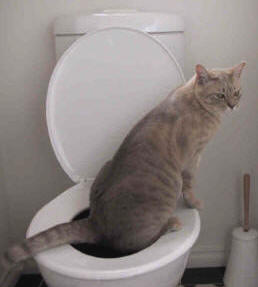We've found this great article about How to Dispose of Cat Poop and Litter Without Plastic Bags down the page on the internet and reckoned it made sense to share it with you on this site.
Intro
As pet cat proprietors, it's essential to bear in mind just how we dispose of our feline buddies' waste. While it may seem practical to flush pet cat poop down the commode, this method can have harmful consequences for both the environment and human wellness.
Alternatives to Flushing
Luckily, there are much safer and more liable methods to dispose of pet cat poop. Think about the adhering to options:
1. Scoop and Dispose in Trash
The most typical method of taking care of cat poop is to scoop it right into a biodegradable bag and toss it in the trash. Make sure to make use of a devoted clutter inside story and get rid of the waste without delay.
2. Use Biodegradable Litter
Select eco-friendly cat litter made from materials such as corn or wheat. These trashes are eco-friendly and can be securely dealt with in the trash.
3. Hide in the Yard
If you have a backyard, take into consideration hiding pet cat waste in a designated area away from vegetable gardens and water sources. Be sure to dig deep enough to avoid contamination of groundwater.
4. Set Up a Pet Waste Disposal System
Purchase a family pet garbage disposal system particularly developed for cat waste. These systems use enzymes to break down the waste, reducing smell and ecological effect.
Health Risks
In addition to ecological worries, flushing pet cat waste can likewise position health threats to people. Cat feces might include Toxoplasma gondii, a bloodsucker that can trigger toxoplasmosis-- a potentially serious disease, specifically for expecting females and individuals with weakened immune systems.
Environmental Impact
Purging feline poop introduces unsafe microorganisms and bloodsuckers into the water, positioning a substantial risk to water ecosystems. These pollutants can adversely influence marine life and compromise water top quality.
Verdict
Responsible animal possession expands past providing food and shelter-- it likewise includes appropriate waste monitoring. By avoiding purging pet cat poop down the commode and opting for alternative disposal methods, we can minimize our environmental footprint and protect human health.
Why Can’t I Flush Cat Poop?
It Spreads a Parasite
Cats are frequently infected with a parasite called toxoplasma gondii. The parasite causes an infection called toxoplasmosis. It is usually harmless to cats. The parasite only uses cat poop as a host for its eggs. Otherwise, the cat’s immune system usually keeps the infection at low enough levels to maintain its own health. But it does not stop the develop of eggs. These eggs are tiny and surprisingly tough. They may survive for a year before they begin to grow. But that’s the problem.
Our wastewater system is not designed to deal with toxoplasmosis eggs. Instead, most eggs will flush from your toilet into sewers and wastewater management plants. After the sewage is treated for many other harmful things in it, it is typically released into local rivers, lakes, or oceans. Here, the toxoplasmosis eggs can find new hosts, including starfish, crabs, otters, and many other wildlife. For many, this is a significant risk to their health. Toxoplasmosis can also end up infecting water sources that are important for agriculture, which means our deer, pigs, and sheep can get infected too.
Is There Risk to Humans?
There can be a risk to human life from flushing cat poop down the toilet. If you do so, the parasites from your cat’s poop can end up in shellfish, game animals, or livestock. If this meat is then served raw or undercooked, the people who eat it can get sick.
In fact, according to the CDC, 40 million people in the United States are infected with toxoplasma gondii. They get it from exposure to infected seafood, or from some kind of cat poop contamination, like drinking from a stream that is contaminated or touching anything that has come into contact with cat poop. That includes just cleaning a cat litter box.
Most people who get infected with these parasites will not develop any symptoms. However, for pregnant women or for those with compromised immune systems, the parasite can cause severe health problems.
How to Handle Cat Poop
The best way to handle cat poop is actually to clean the box more often. The eggs that the parasite sheds will not become active until one to five days after the cat poops. That means that if you clean daily, you’re much less likely to come into direct contact with infectious eggs.
That said, always dispose of cat poop in the garbage and not down the toilet. Wash your hands before and after you clean the litter box, and bring the bag of poop right outside to your garbage bins.
https://trenchlesssolutionsusa.com/why-cant-i-flush-cat-poop/

As a passionate person who reads about Don’t flush cat feces down the toilet, I was thinking sharing that piece of content was a good idea. Those who enjoyed reading our post kindly don't forget to pass it around. We thank you for reading our article about Don’t flush cat feces down the toilet.
Go Services